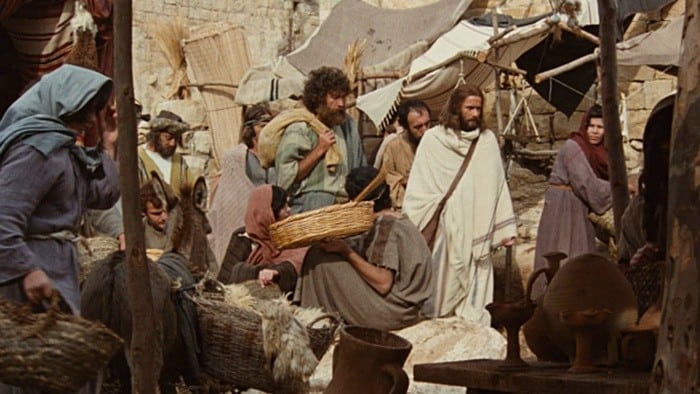In the Book of Acts, we see the launch of the church. The same disciples that followed Jesus around for three years were filled with the Spirit and unleashed on the world-and the world has never been the same.
There is so much to gain by reading the Gospels through a lens of leadership development. Jesus poured Himself into the disciples to prepare them for the work that was to come. And for those of us who lead teams and manage people, Jesus has a lot to teach us about equipping and empowering others.
Here are two ways we can lead more like Jesus:
1. Lead prayerfully
A sharp knife is one of the most essential chef tools. Not only is a dull knife ineffective, but it’s also dangerous. A dull blade requires more pressure to cut with, and that extra force creates opportunities for slip-ups and cuts. When it comes to leading like Jesus, spiritual sensitivity is like a kitchen knife. If your spirit is not well-honed and sustained by the Spirit, you’re going to end up struggling in your own strength.
Throughout the Gospels, Jesus retreats to spend time with God. Like a chef keeping his tools sharp, Jesus knows that He relies on His connection with God to be effective.
In the sixth chapter of Luke, we see Jesus choosing the 12 disciples (Luke 6:13-16). But it’s important to note that this was after spending the whole night alone in prayer (v. 12). This decision was too critical to make without the Father’s input-and Jesus ensured He was prayed up and prepared.
During the Last Supper, Jesus warns Peter, “Simon, Simon, Satan has asked to sift all of you as wheat. But I have prayed for you, Simon, that your faith may not fail. And when you have turned back, strengthen your brothers” (Luke 22:31-32, emphasis added).
Jesus took His leadership seriously enough to pray for the wisdom to fulfill His responsibilities and also for those in His care to endure and grow through their trials. If we want to lead like Jesus, we’ll put prayer first.
2. Show, watch, release
The disciples were spectators for a lot of Jesus’s ministry. They watched Jesus heal, cast out demons, and teach. Sometimes, Jesus would share a parable and later He’d take His disciples aside to explain it to them.
There were other times when Jesus gave the disciples opportunities to figure things out for themselves. In Mark 6, the disciples find themselves surrounded by 5,000 hungry folks. The disciples tell Jesus to send the crowd away so they can find something to eat. Jesus tells them, “You give them something to eat” (Mark 6:37a).
Here Jesus tests the disciples’ faith and trust. How will they respond under stress? Who will they turn to in a difficult situation? Naturally, the disciples fall back on what they understand: “That would take more than half a year’s wages! Are we to go and spend that much on bread and give it to them to eat” (Mark 6:37b)? As we know, Jesus demonstrates what’s possible by multiplying the food they have and making it more than enough.
Sometimes Jesus would send the disciples out on their own to minister to others. One time in Matthew 10, Jesus sends the disciples out to minister. He gives them brief instructions and sends them out to minister on their own. At another time, Jesus sends out 72 followers to minister in pairs.
Throughout Jesus’s ministry, we see a strategy at work. Sometimes the disciples are learning from Jesus’s example, sometimes the Lord lets them try it themselves, and sometimes He gives them more responsibility and less oversight. Each part of this leadership strategy equipped the disciples to become more reliant upon God and each other to meet challenges.
All of this was leading to a time when Jesus was not going to be with them physically, and they would need to be prepared to respond to the Spirit and follow the Lord’s leading. If we want to be good leaders, we need to model what we expect from others and allow them opportunities to muddle through on their own, giving them more and more responsibility as they go.
Jesus as a model leader
If any leader in the history of the world had the right to choose a more directive, top-down leadership style, it was Jesus. But throughout His ministry, we see Him demonstrating a very humble, service-oriented, and collaborative style of leadership. Ultimately, His leadership had a goal. By the time He was finished with these guys, they needed to be ready to take His message of redemption to the world.
We, too, should see leadership as more than a position or title. It’s a responsibility to equip and empower others to discover their potential and excel in their areas of influence. You can learn more about leadership by reading this article.
